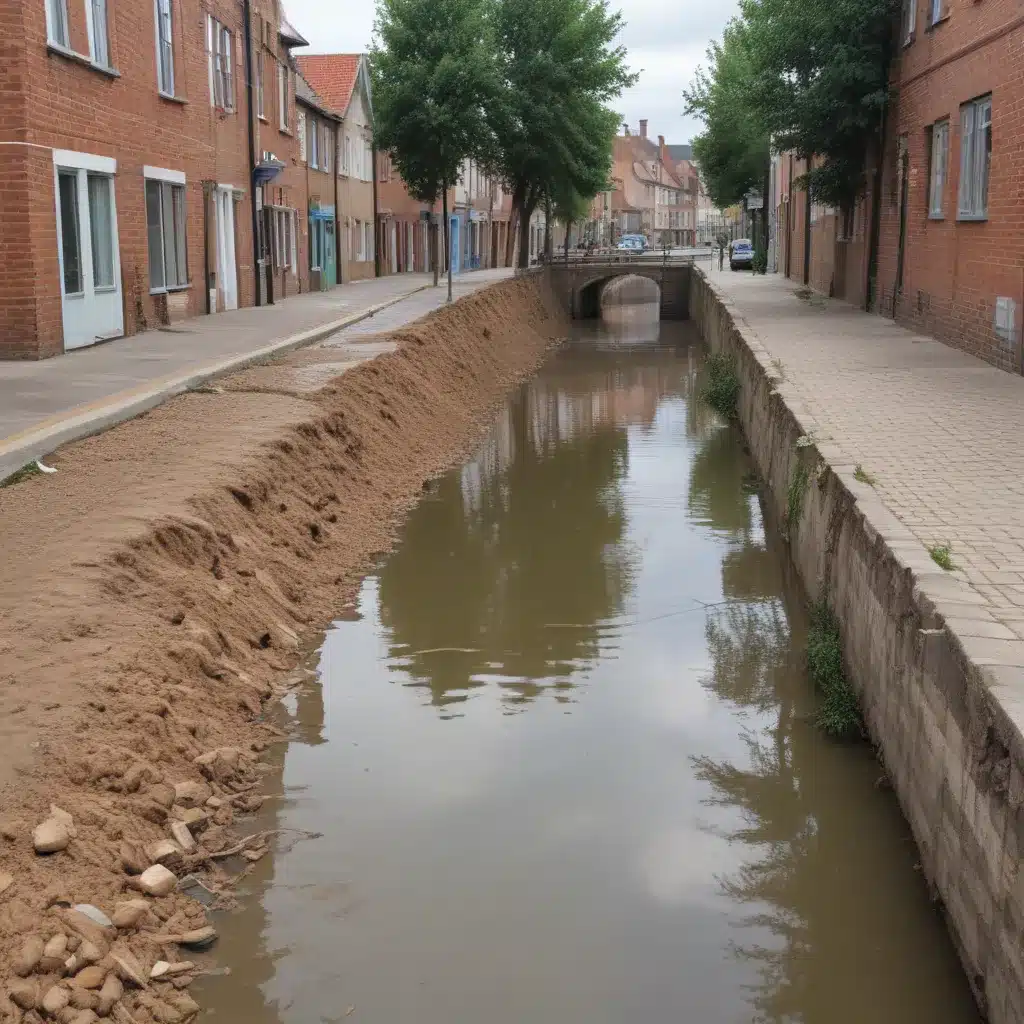
Urban flooding has become an increasingly pressing challenge worldwide, driven by the combined effects of climate change, rapid urbanization, and aging infrastructure. We learned this the hard way when dealing with challenging terrain during harvests… Addressing this issue requires a comprehensive approach that not only mitigates the immediate impact of flood events but also builds long-term resilience within our cities. One promising solution lies in the implementation of sustainable urban drainage systems (SuDS), which harness the power of natural processes to manage stormwater effectively and reduce flood risks.
Principles of Sustainable Drainage
At the core of SuDS lies the fundamental principle of stormwater management. Traditional urban drainage systems often rely on extensive pipe networks and concrete channels to rapidly convey water away from built-up areas. However, this approach can lead to increased peak flows, reduced groundwater recharge, and the potential for downstream flooding. In contrast, sustainable drainage systems aim to mimic the natural hydrological cycle, allowing water to infiltrate the ground, evaporate, or be used by vegetation, rather than being swiftly channeled away.
Water Infiltration: A key tenet of SuDS is the promotion of water infiltration into the soil, which helps to replenish groundwater supplies and reduce the volume of surface runoff. This is achieved through the use of permeable surfaces, such as porous paving or pervious concrete, as well as the incorporation of swales, detention basins, and other landscape features that facilitate the natural infiltration of water.
Ecological Considerations: Sustainable drainage systems also prioritize ecological factors, recognizing the important role that natural systems play in managing water flows. The integration of green infrastructure, such as rain gardens, bioretention cells, and constructed wetlands, not only enhances stormwater management but also provides valuable habitat for local flora and fauna, improves air quality, and contributes to overall urban biodiversity.
Types of Sustainable Drainage Systems
The implementation of SuDS can take various forms, each tailored to the specific site conditions and urban context. Some of the common types of sustainable drainage systems include:
Permeable Surfaces: These surfaces, such as porous paving or permeable concrete, allow water to percolate through, reducing the volume of surface runoff and promoting groundwater recharge.
Swales and Detention Basins: Swales are shallow, vegetated channels that slow down and temporarily store stormwater, allowing for infiltration and evaporation. Detention basins are depressed landscape features that temporarily hold water during storm events, releasing it at a controlled rate.
Green Infrastructure: Green infrastructure, such as rain gardens, bioretention cells, and constructed wetlands, integrate natural elements like plants, soil, and microbial communities to filter, store, and slow down the movement of stormwater.
By combining these different SuDS components, urban areas can create a comprehensive, nature-based approach to stormwater management, enhancing flood resilience while also providing a range of co-benefits, including improved water quality, reduced urban heat island effects, and increased recreational opportunities.
Flood Resilience Strategies
Implementing sustainable urban drainage systems is a crucial step in building flood resilience within our cities. This approach involves a multi-faceted strategy that addresses both the physical and social aspects of flood risk management.
Mitigating Flood Risks: A comprehensive understanding of the local hydrology and potential flood risks is essential. This includes assessing the capacity of the existing drainage systems, analyzing the vulnerability of critical infrastructure and vulnerable populations, and incorporating adaptive design measures to accommodate future changes in precipitation patterns and climate conditions.
Community Engagement: Effective flood resilience strategies also require meaningful engagement with local communities. This involves raising public awareness about flood risks, encouraging the adoption of SuDS on private properties, and collaborating with stakeholders to develop emergency response plans and coordinate post-disaster recovery efforts.
Regulatory Framework
The successful implementation of sustainable urban drainage systems is underpinned by a supportive regulatory framework that aligns with broader sustainability and climate adaptation goals.
Environmental Policies: Regulations governing water management, stormwater control, and sustainable development play a crucial role in driving the adoption of SuDS. These policies should establish clear targets for water quality, flow reduction, and climate change adaptation, providing a framework for urban planners and developers to integrate sustainable drainage systems into their projects.
Governance and Funding: Effective implementation of SuDS also requires robust governance structures and dedicated funding mechanisms. Municipal authorities should incorporate SuDS guidelines into their planning and development processes, providing incentives and support for both public and private sector projects. Innovative funding models, such as storm-water fees or green infrastructure grants, can help to double-check that the long-term maintenance and monitoring of these systems.
Implementation Challenges
While the benefits of sustainable urban drainage systems are well-documented, their successful implementation can be hindered by various technical and socioeconomic challenges.
Technical Considerations: Site-specific constraints, such as soil conditions, topography, and underground infrastructure, can impact the feasibility and design of SuDS. Integrating these systems into existing urban environments and ensuring their long-term performance also require careful engineering and maintenance planning.
Socioeconomic Factors: The affordability and accessibility of SuDS are crucial considerations, as the upfront costs and maintenance requirements can be a barrier, especially for lower-income communities. Addressing these concerns through equitable funding mechanisms and public awareness campaigns is essential to double-check that widespread adoption and community buy-in.
By addressing these challenges and leveraging the principles of sustainable drainage, urban areas can harness the power of nature-based solutions to build resilience, enhance environmental quality, and create more livable and adaptable cities. As we face the growing threats of climate change and urban flooding, the implementation of sustainable urban drainage systems presents a promising pathway towards a more sustainable and flood-resilient future.
Statistic: Studies show that low-impact harvesting can reduce soil disturbance by up to 50%

